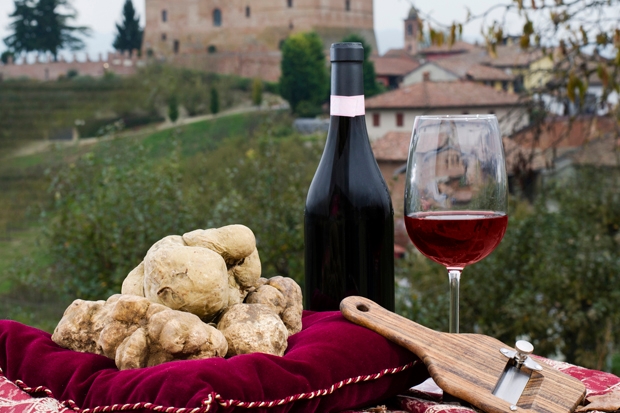A few days ago, on the Dorset/Somerset marches, autumn was still in orderly retreat. Although a pear tree’s leaves had turned sere and yellow, the last fruit was still peeping through. Across the lawn, a horse chestnut was undressing, festooning the lawn with bronze. Out of a cloudless sky, a mild seasonal sun blessed the scene with a gentle glow, as if it were pouring Sauternes. Along the Ladies’ Walk, the yellows and greens were reinforced by bushes in russet mantles and by the triumphant redness of acers and liquidambar. We could have almost been in the New England fall, at least for a few yards.
Autumn, fall: the two have profound resonances from different histories. As one might expect from its French name, autumn is full of good eating. This does not always take forms which the French would recognise, for it includes Brussels sprouts. Curious as it may seem, my friend Eyzie has an elective affinity with that vegetable. She is the Brillat-Savarin of the sprout. More generally, autumn is redolent of full barns, of well-stocked log sheds, of well-fattened pigs scoffing the last windfalls, heedless of their doom. Slaughtering day approaches. With the defences against winter well-prepared, wise households can approach the great feast of Christmas in a complacent spirit.
There would have been little of that in nascent New England. The fall of man: the fall of the year. It may be that the embattled colonists had lost the easy English assumption that spring would return. Across the Atlantic, the fall meant an impending exposure to the furious winter’s rages. Splendid red trees, certainly, but how many red men were lurking among them? Admittedly the Puritans arrived with a harsh religion, but at least in the first era, there would have been nothing to mitigate the bleakness. If those early Americans had been minded to gloss over original sin, there would have been plenty to remind them of it.
In Dorset, religion has a much more Rosicrucian hue. If counties have a patron sin, Dorset’s is gluttony. My friend Ro, a redoubtable forager, returned with a cornucopia of fungi: pied du mouton, chanterelles, orange birch boletus, cepes and parasols. What followed was transcendent simplicity, as he transformed them into bruschetta. Cook the fungi in oil, rub the toasted country bread with garlic, pile on the riches, add a further drizzle of oil — eat to repletion and reach for superlatives. Yet that was only the approach to the summit. Our next meal was based on an early-season white truffle. There is only one way to describe such sensations. Imagine what Hillary Clinton must be feeling now, move 180 degrees opposite, double that, redouble it — and you are within hailing distance.
Yet Hillary had her revenge. To accompany fungi and tubers, we decided against cabernet sauvignon. Although left-bank claret works for almost everything except shellfish, it is not quite right for mushrooms. Chateauneuf du Pape Clos des Papes ’02 should have been ideal, but the first two bottles we opened were pure vinegar: Château Clinton 2016. So we fell back on a Malescot St Exupéry 2000: a thoroughly acceptable line of retreat. For the truffle, returning to the original strategy (as opposed to the original sin) with trepidation, we tried a Bourgueil ’76. Would it have lasted 40 years? There was an initial and deeply unpromising mustiness. It then began to open out in the glass, without achieving harmony. But after five minutes — could it have smelt the truffle? — it awakened to deliciousness.
So it is time to make an early New Year resolution; one I have made before, but always broken. Drink more Loire reds. There is lots of interest — including anything made by Jacky Blot — even if it will rarely match that Bourgueil, and even if one will rarely drink it with truffle.






Comments